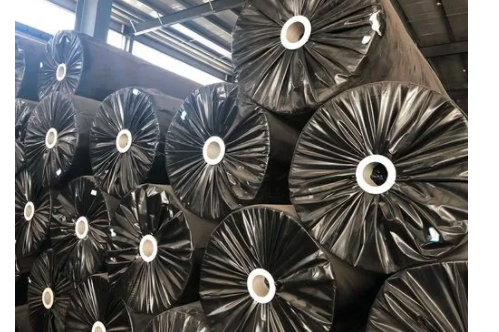- Understanding the Role of Geomembrane Liners in Waste Management
- Innovations in Geomembrane Liners for Water Management
- Geomembrane Liners: A Comprehensive Guide
- The Future of Geomembrane Liners in Civil Engineering
- Geomembrane Liners: Enhancing Landfill Stability
Manager:
WhatsApp:+86 177 0135 2670
Tel:+86 177 0135 2670
Email:marketing@okorder.com
Address:3rd Floor, No.2 Building, No.1 Sanlihe Road
The Place of Paving Geotextiles in the Modern Engineering
Thread like exceptionally useful and inventive paving Geotextiles that have found a place in the complex fabric of today’s engineering. These are permeable fabrics used with soil which perform several functions including separation, filtration, reinforcement and protection among others. A modest geotextile made from polymeric materials has transcended its basic use to become a vital part of numerous civil engineering projects such as roads, aerodromes, railways and coastal constructions.
The History of Paving Geotextiles: The Chronicles
Geotextile sagas can be traced back to ancient Egypt where simple forms of textiles were utilized to stabilize roadways. Today is a new era when geotextiles have been re-introduced in form of complex material specifically designed for modern infrastructure demands. Evolution of paving geotextiles is testament to human creativity and an insatiable thirst for improvement.

A Marvel in Our Time: Multiple Roles by Geotextiles
Paving geotextiles are not merely fabrics but multifaceted inventions that attend to various challenges facing civil engineering. They prevent intermixing between different layers during construction thereby ensuring structural integrity. Erosion can also be prevented through their application as filtration media as they allow water to pass through while restraining soil particles hence stabilizing the construction.
An Invisible Column: Reinforcement
Unseen reinforcement provided by paving approaches using geotextile offers some strength. They reinforce soil and other materials used in building making them more durable and able to hold more weight. Such reinforcement is particularly important for embankments, retaining walls or even roads and airfields.
Silent watchmen: Protection And Drainage
Similarly, these serve as protectors safeguarding substrates from puncturing or harmful abrasions being subjected upon them. In this case they are significant parts since it prevents water logging thus ensures free flow off water and other fluids so that there is no stagnating which could lead to the deterioration of structures.
Material And Methodology: The Science Of Fabrics
The choice of material for geotextiles is crucial, with polypropylene, polyester, and polyethylene fibers being the most commonly used due to their durability and resistance to environmental degradation. They are either woven, needle punched or heat bonded resulting in different characteristics of the geotextiles.
Weaving: The Skill Of Interlacing
woven geotextiles are made by interlacing yarns like traditional weaving process for textile manufacturing. In warp direction as well as fill direction it offers high strength and modulus. It creates a fabric characterized by simple pore structure thus suitable for fine filtration applications.
Needle Punching: Entanglement Technique
Barbed needles are used to entangle fibers within the geotextile during this method thereby creating a strong fabric. This leads to nonwoven geotextile whose random fiber orientation still provides excellent performance in various civil engineering fields.
Heat Bonding: Melting Together Filaments
Geotextiles made using this technique combine both strength and flexibility through fusion of these fibres together by incorporating heterofilaments or those having different melting points.
Applications in Pavement Construction: A closer glance
The true versatility of paving geotextiles is displayed by their use in pavement construction. They act as stress relieving interlayers that retard the reflection of cracks and reduce road maintenance expenses. This increases the lifespan of pavements and enhances their utility.
The Rafting Effect: A Foundation for Stability.
In the process of road and airfield construction, an initial layer of geogrids supported by occasionally applying geotextiles exerts a rafting effect. Thus, this foundation ensures that the structure remains stable thereby making it strong and durable for long time usage.
Field Monitoring: The Watchful Eye
The improvement in technology has led to the inclusion of monitoring systems on these textiles to monitor performance within its line area. These systems provide useful information on how geotextiles minimize soil moisture below concrete pavements exposed to changing rainfall or temperatures.
The Future of Paving Geotextiles: An Optimistic Outlook
At present, the role played by paving geotextiles in civil engineering is about to explode due to a myriad opportunities beckoning them into the future. The scope of applications for geotextile is set to increase with continuous R&D efforts taking place in this field. It is possible that integration of smart materials and technologies could result in improved performances thereby ensuring their indispensability in various professions under engineering.
Innovations on the Horizon
There is massive room for innovations related with paving geotextiles. Such may range from self-repairing techniques at microscopic level to adaptable environment condition based geo-texts among others.
Sustainability: The Green Thread
In an era when sustainability is paramount, paving geotextiles contribute towards greening up construction sector projects. In addition, they are also eco-friendly meaning that no more quarry rock will be needed apart from making structures more durable.
Conclusion: Weaving Strength into the Fabric of Infrastructure
It is however important to point out that geotextiles are beyond mere materials but instead they are the unsung heroes of modern infrastructure. They play numerous roles in terms of reinforcement, protection and drainage which demonstrate the engineering genius as well as its continued commitment to excellence. Consequently, paving geotextiles’ history will only continue expanding from here by introducing into it additional strength and resilience within our built environments. In doing that we not only strengthen the ground under our feet but also restate our aspiration for a strong and sustainable future.
- Previous:The Unseen Backbone: Modern Construction with Mirafi® 500X Geotextile Fabric
- Next:The durability of woven geotextiles: An innovative advance in engineering fabrics






